Abstract
As part of an International Collaborative Study, the influence of medium and certain medium components on the results of disc susceptibility testing with nine antibiotics was examined and statistically evaluated. Four basic media, Trypticase Soy Agar, Grove and Randall's formula # 9 agar, and Mueller-Hinton agar with and without 1 mg of l-tryptophan per 100 ml, were used with six bacterial strains. Significant differences in zone diameters occurred with most antibiotics. The largest consistent differences were seen with tetracycline, and appeared to result from varying degrees of chelation of the antibiotic with free cations in the media. Reproducibility studies on different batches of Mueller-Hinton agar from two manufacturers showed some statistically significant differences, which were small except with tetracycline. Reproducibility between the products of a single manufacturer was excellent. The results of experiments to determine the effect of the addition of 5% blood of different species to agar medium showed that medium containing citrated or defibrinated horse, rabbit, sheep, or human blood yielded closely similar zone diameters, except that tetracycline zones were larger with citrated blood. A single type of medium should be selected for routine susceptibility tests whenever possible, and reproducibility of performance of the products of different manufacturers should be sought.
Full text
PDF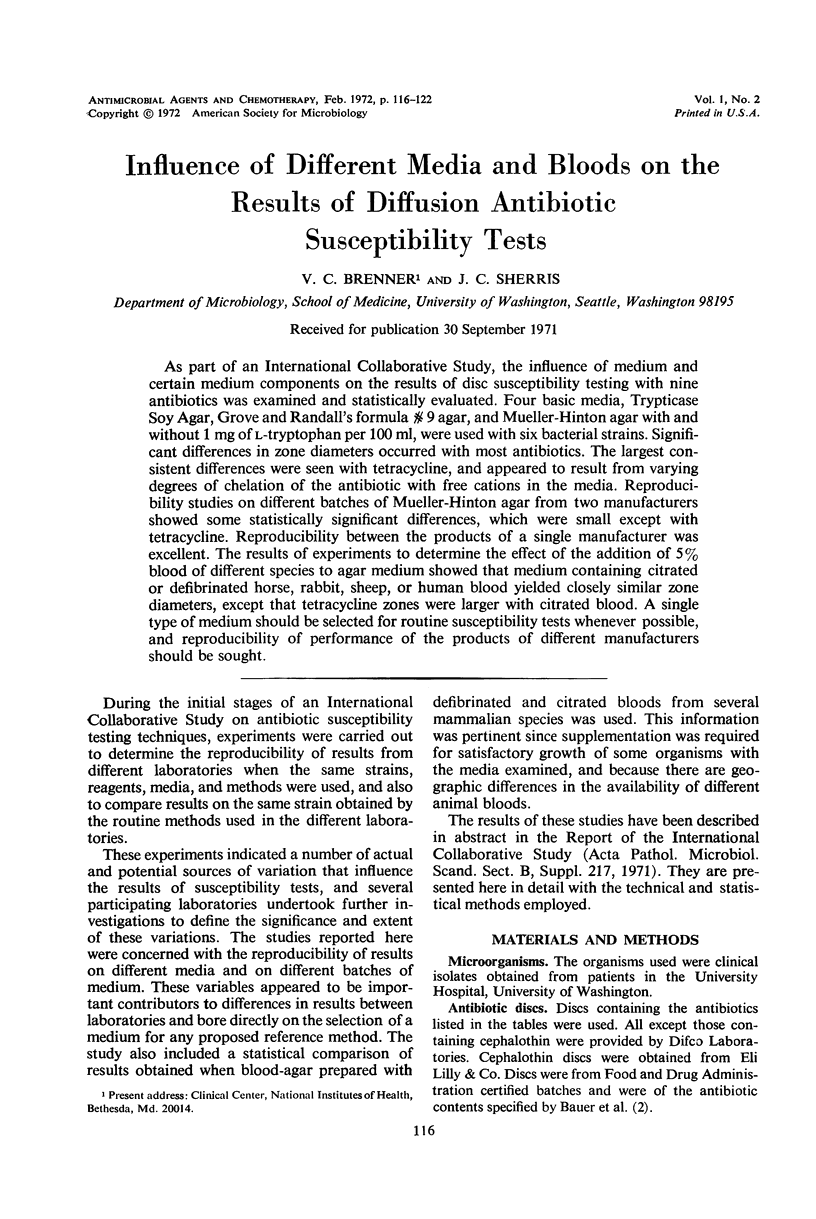

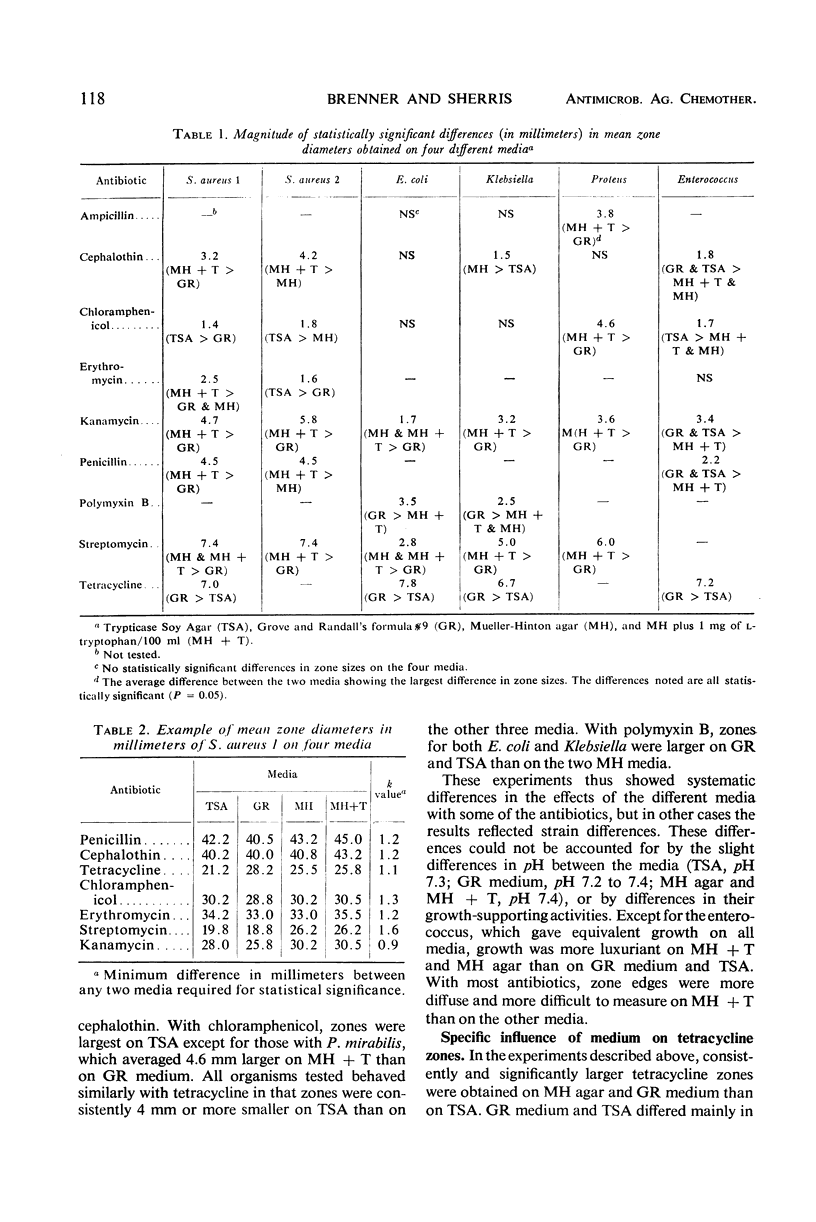

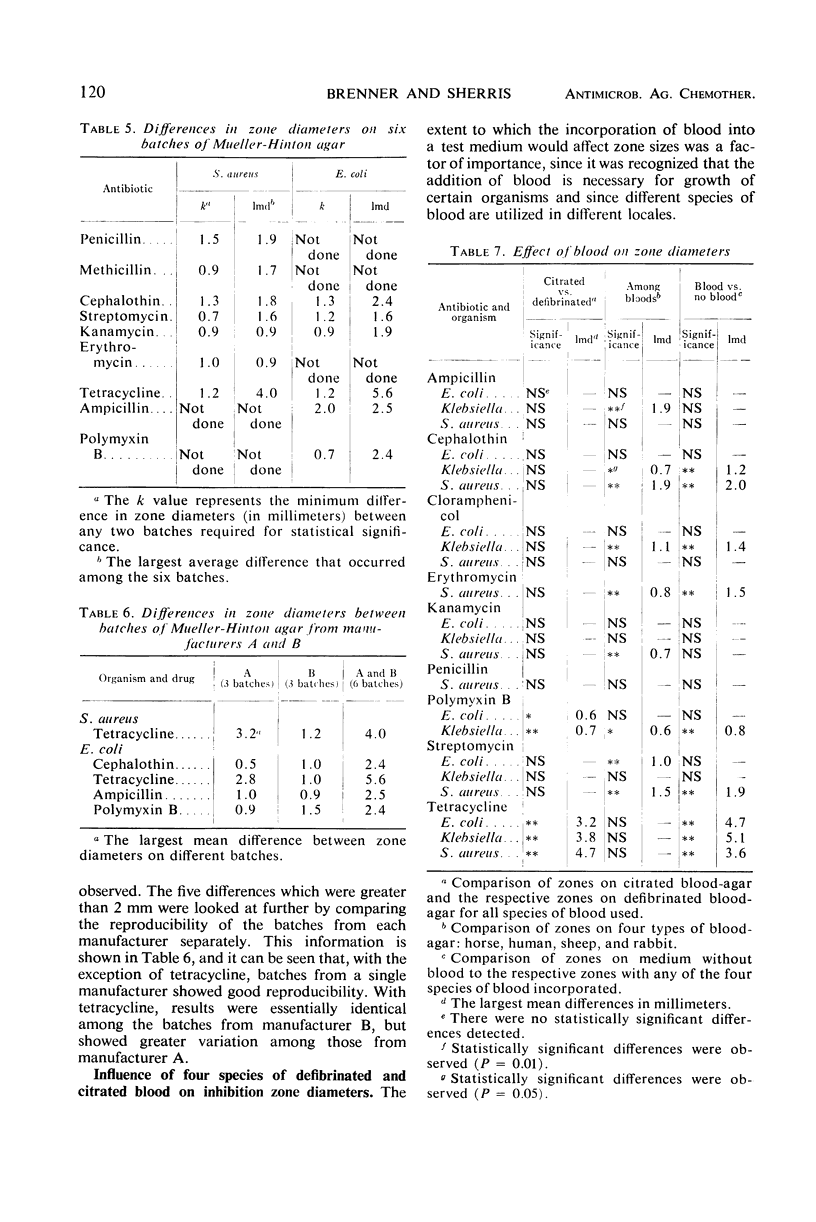
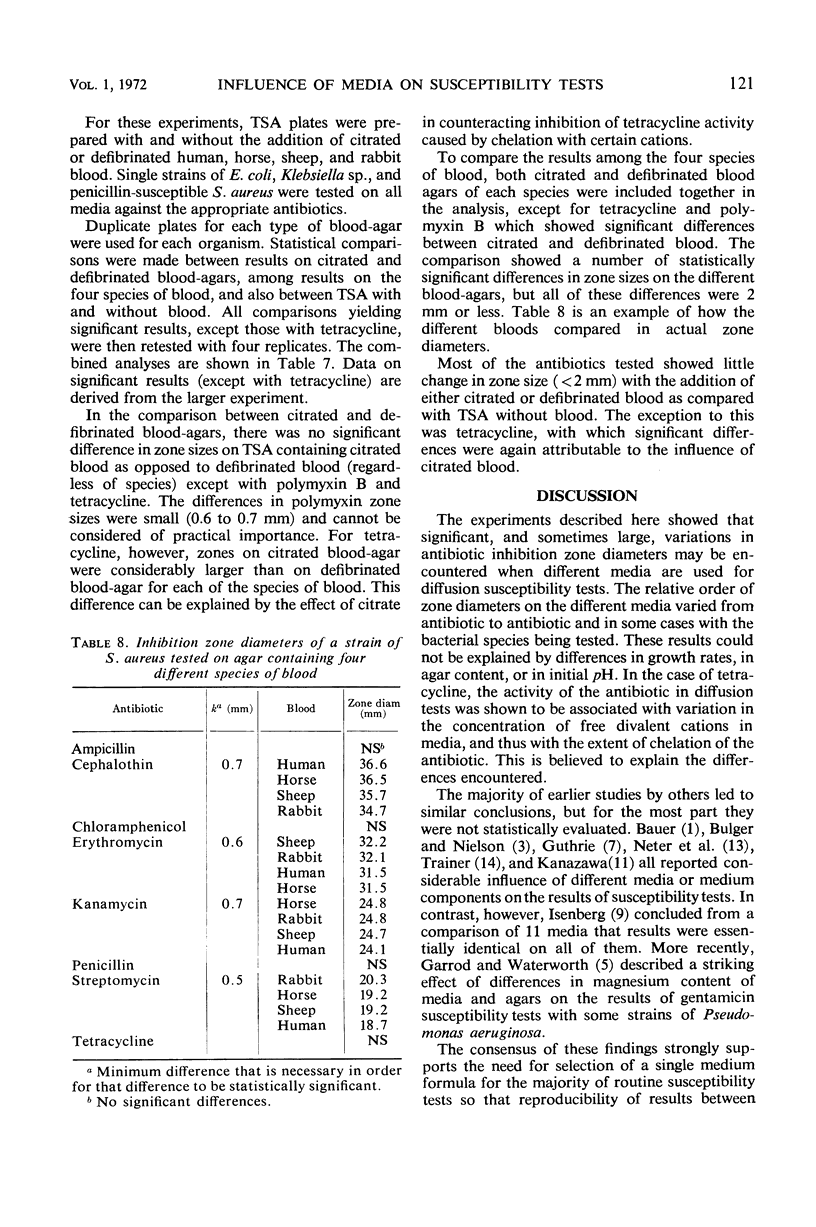
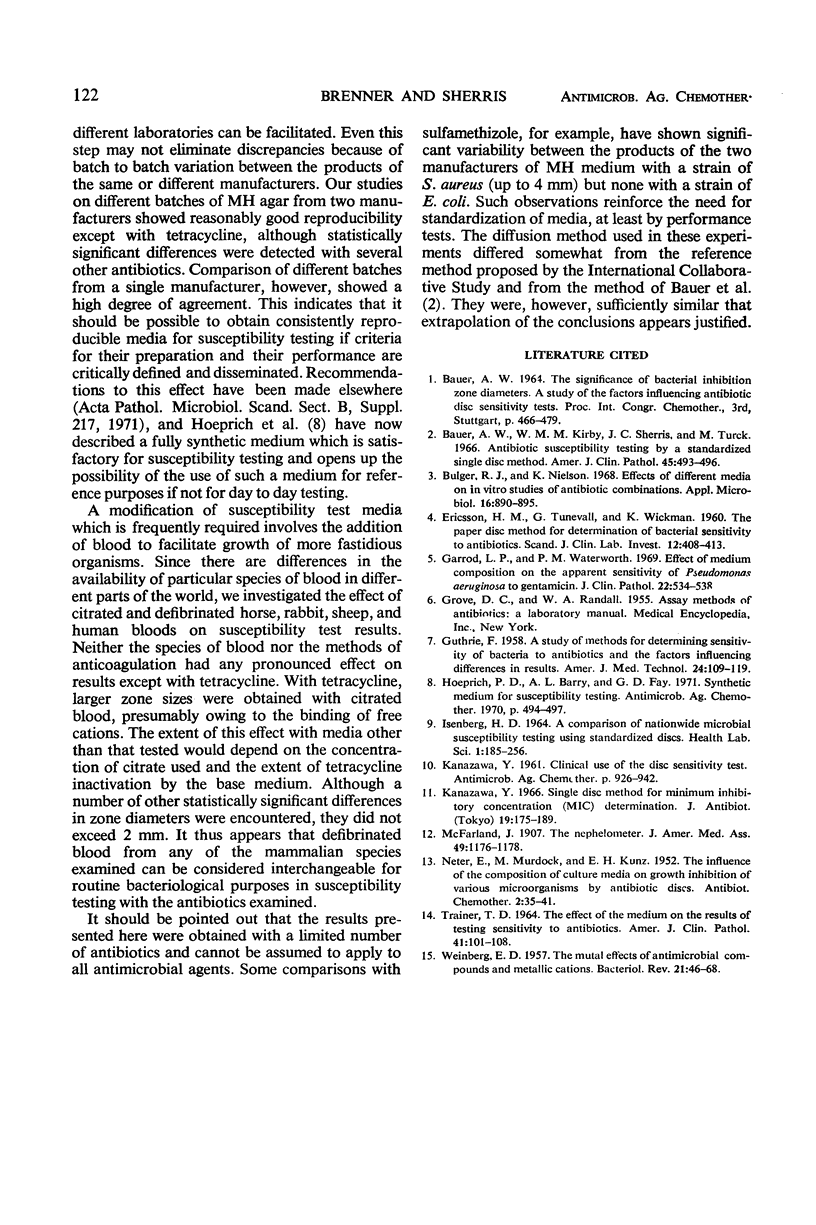
Selected References
These references are in PubMed. This may not be the complete list of references from this article.
- Bauer A. W., Kirby W. M., Sherris J. C., Turck M. Antibiotic susceptibility testing by a standardized single disk method. Am J Clin Pathol. 1966 Apr;45(4):493–496. [PubMed] [Google Scholar]
- Bulger R. J., Nielson K. Effect of different media on in vitro studies of antibiotic combinations. Appl Microbiol. 1968 Jun;16(6):890–895. doi: 10.1128/am.16.6.890-895.1968. [DOI] [PMC free article] [PubMed] [Google Scholar]
- ERICSSON H. The paper disc method for determination of bacterial sensitivity to antibiotics. Studies on the accuracy of the technique. Scand J Clin Lab Invest. 1960;12(4):408–413. doi: 10.3109/00365516009065405. [DOI] [PubMed] [Google Scholar]
- GUTHRIE F. A study of methods for determining sensitivity of bacteria to antibiotics and the factors influencing differences in results. Am J Med Technol. 1958 Mar-Apr;24(2):109–119. [PubMed] [Google Scholar]
- Garrod L. P., Waterworth P. M. Effect of medium composition on the apparent sensitivity of Pseudomonas aeruginosa to gentamicin. J Clin Pathol. 1969 Sep;22(5):534–538. doi: 10.1136/jcp.22.5.534. [DOI] [PMC free article] [PubMed] [Google Scholar]
- Hoeprich P. D., Barry A. L., Fay G. D. Synthetic medium for susceptibility testing. Antimicrob Agents Chemother (Bethesda) 1970;10:494–497. [PubMed] [Google Scholar]
- Kanazawa Y. Single disc method for minimum inhibitory concentration (MIC) determination. J Antibiot (Tokyo) 1966 Jul;19(4):175–189. [PubMed] [Google Scholar]
- WEINBERG E. D. The mutual effects of antimicrobial compounds and metallic cations. Bacteriol Rev. 1957 Mar;21(1):46–68. doi: 10.1128/br.21.1.46-68.1957. [DOI] [PMC free article] [PubMed] [Google Scholar]


